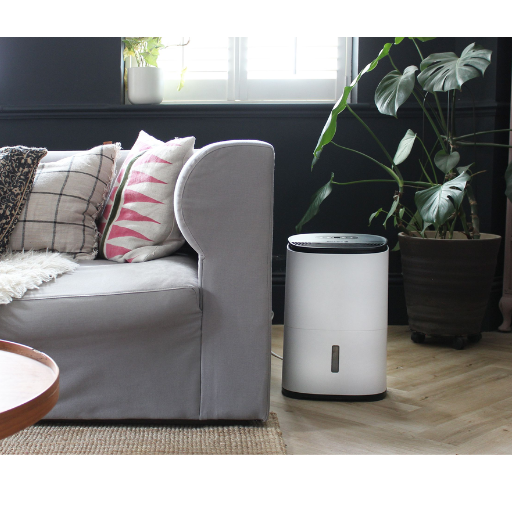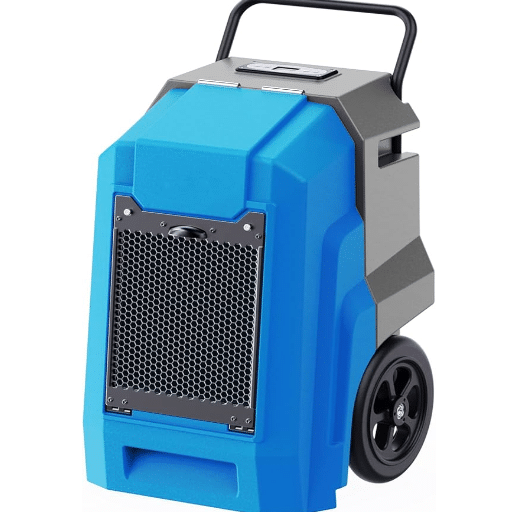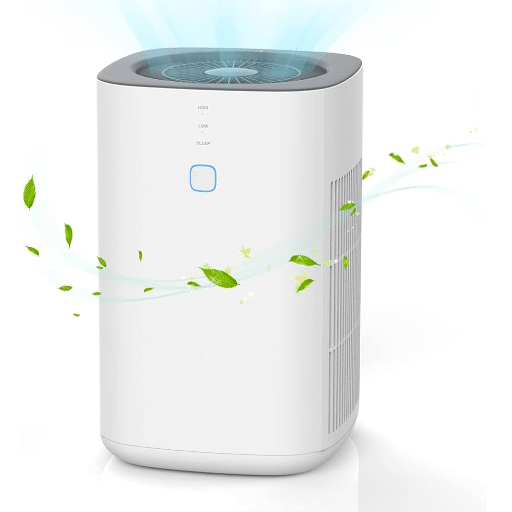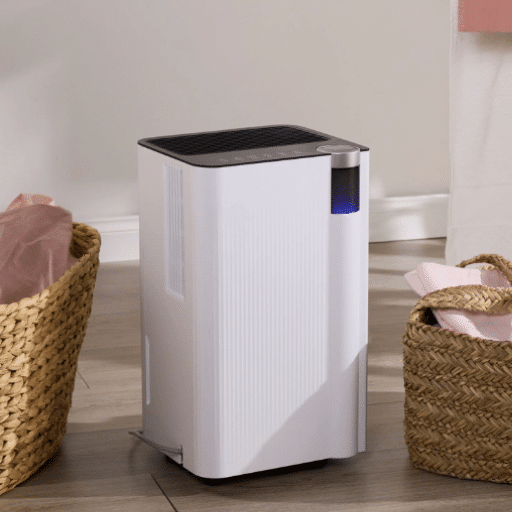Quick Answer: Yes, modern dehumidifiers are generally safe to leave unattended when used properly. However, understanding safety features, proper placement, and maintenance requirements is essential for worry-free operation.
Most people don’t think of leaving a dehumidifier running all day long as a danger. After all, the device is designed to prevent moisture problems in the house. But is it safe to leave a dehumidifier unattended for extended periods? This comprehensive guide examines the trade-offs and consequences of using a dehumidifier unsupervised, covering safety mechanisms, environmental considerations, and productivity measures.
Understanding How Dehumidifiers Work
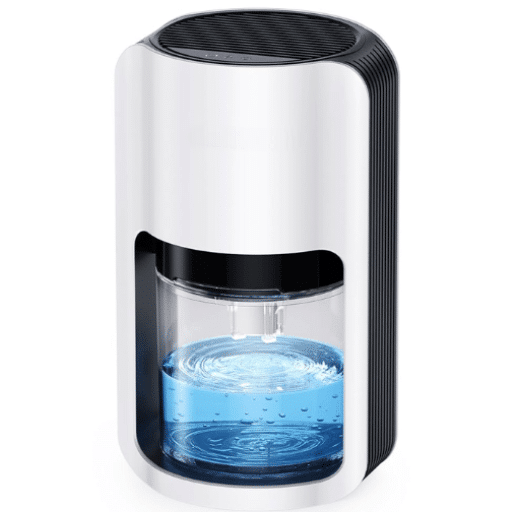
What is a Dehumidifier?
A dehumidifier is a machine designed to reduce humidity in a particular area within a building. It removes excessive moisture from humid air and recycles it, releasing dehumidified air back into the living space. This process provides relief from high humidity often found in homes, offices, and other indoor spaces.
The Dehumidification Process
The principle of dehumidification is straightforward:
- Air Intake: Hot, humid air is drawn in by a fan
- Cooling: Air passes over cooled coils
- Condensation: Water vapor condenses into liquid water droplets
- Collection: Water is collected in a tank or drained through a hose
- Air Release: Dry air is released back into the room
Types of Dehumidifiers
| Type | How It Works | Best For | Key Features |
|---|---|---|---|
| Refrigeration Dehumidifiers | Cool air to remove moisture (like an air conditioner) | Warm, humid climates | Energy efficient, common, affordable |
| Desiccant Dehumidifiers | Use desiccant materials to absorb moisture | Cold environments (basements, garages) | Work in low temperatures, quiet operation |
| Whole-House Dehumidifiers | Integrated with HVAC system | Entire homes | Central control, improved overall air quality |
Safety Considerations for Unattended Operation

Built-in Safety Features
- Automatic Shutdown: Turns off when water tank is full
- Overheating Protection: Prevents dangerous temperature buildup
- Tank Full Alarm: Alerts when water needs emptying
- Thermal Cutouts: Emergency shutdown for overheating
- Timer Controls: Programmable operation schedules
Common Risks to Be Aware Of
- Water Spillage: Tank overflow if automatic shutoff fails
- Overheating: Poor ventilation or lack of maintenance
- Energy Waste: Continuous operation without optimization
- Physical Damage: Improper placement leading to falls
- Fire Hazard: Rare but possible with damaged units
Manufacturer Recommendations
Essential Safety Practices
- Place on firm, level surfaces
- Keep away from combustible materials
- Maintain proper clearance from walls and furniture
- Use surge protectors
- Inspect cords and plugs regularly
- Choose models with automatic drainage for extended use
Best Practices for Safe Operation
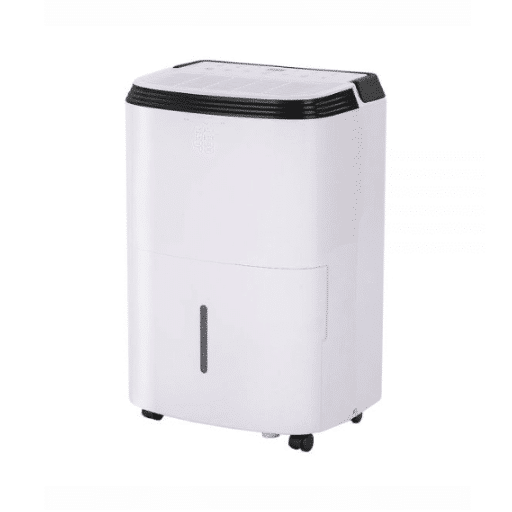
Proper Placement Guidelines
- Central Location: Place in well-ventilated, central areas
- Clearance: Maintain 12-18 inches from walls and furniture
- Level Surface: Ensure stable, even placement
- Avoid Heat Sources: Keep away from heaters, direct sunlight
- Accessibility: Easy access for maintenance and monitoring
Optimal Settings and Runtime
| Humidity Level | Recommended Setting | Typical Runtime | Energy Efficiency |
|---|---|---|---|
| High (>60%) | 45-50% | 10-12 hours/day | High consumption initially |
| Moderate (50-60%) | 40-45% | 6-8 hours/day | Moderate consumption |
| Normal (<50%) | 30-40% | 4-6 hours/day | Low consumption |
Maintenance for Optimal Safety
Daily Maintenance Tasks
- Check water tank level (in high humidity areas)
- Monitor for unusual noises or odors
- Verify proper airflow around unit
Weekly Maintenance Tasks
- Empty and clean water tank with soap and hot water
- Inspect electrical cord and plug
- Check humidity readings and adjust settings
Monthly Maintenance Tasks
- Clean or replace air filters
- Inspect coils for dust buildup
- Test automatic shutoff features
- Clean exterior and ventilation areas
Dealing with Condensation Issues
Understanding Condensation Problems
Condensation occurs when warm, humid air contacts colder surfaces, forming water droplets. This can happen on windows, walls, and even on poorly maintained dehumidifiers.
Prevention Strategies
- Proper Sizing: Choose appropriate capacity for room size
- Adequate Ventilation: Use exhaust fans and natural airflow
- Temperature Control: Avoid sudden temperature fluctuations
- Insulation: Improve wall and window insulation
- Regular Maintenance: Keep equipment clean and functional
Water Management and Spillage Prevention
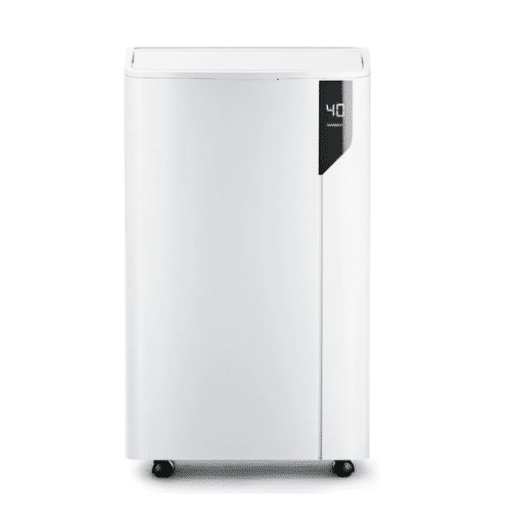
Drainage Options
- Manual Emptying: Regular tank emptying (most common)
- Gravity Drainage: Continuous hose drainage to floor drain
- Pump Drainage: Pumped drainage to higher locations
Spillage Response Plan
- Turn off and unplug the dehumidifier immediately
- Remove excess water with towels or wet vacuum
- Use fans or additional dehumidifiers to dry the area
- Check for damage to flooring or nearby items
- Inspect unit before resuming operation
Energy Efficiency Considerations
Optimizing Energy Use
- Use programmable timers and humidistats
- Maintain humidity levels between 30-50%
- Clean filters regularly for optimal efficiency
- Choose properly sized units for your space
- Consider smart dehumidifiers with remote monitoring
References
-
Energy Efficiency of Humidity Control Approaches – Florida Solar Energy Center (FSEC) – Discusses the reliability and operation of dehumidifiers over extended periods, including unattended use.
-
Student Conduct & Behavior – University of Cincinnati – While not directly about dehumidifiers, it provides safety policies that can be relevant to unattended appliances in residential settings.
Frequently Asked Questions (FAQ)
Is it safe to leave a dehumidifier unattended?
If something is left on the contrary dampness is caused then it will not cause any damage. If the dehumidifier is operating it is usually placed on such a surface where it may be interfered however layer of water is dripped into a container or the water is more vaporized by a hose attachment. But it is in the order of things to read the objectives from the manufacturer in regard to particular cases of dehumidifiers. Because they may comprise instructions for safe storage and operation even without active presence.
For how long should a dehumidifier be kept on unattended?
How long one can keep a dehumidifier on, without turning it off depends on a lot of factors. One cannot precisely answer this without having details of the device and at what rate is the percentage of humidity in the air in the room. Moreover, there is usually no harm in letting a dehumidifier work more than a few hours but, it is advised that the level of humidity should be checked before letting the unit remain on since it may lead to excess humidity.
Could a dehumidifier be used for several weeks without switching it off?
Although certain types of dehumidifiers are made to work continuously, ask any expert around you and they will all say that no appliance is to be left working alone for more than a few straight days. This is because one has to keep checking if the collection bottle is full or not and whether the device is still working. It may be wise to go for one of those dehumidifiers that provide continuous drainage option where you’ll not need to guard them all the time.
What if the dehumidifier tank is full?
In case the dehumidifier reservoir becomes full and the appliance design doesn’t support the continuous drainage, the dehumidification will come to a halt to avoid spillage. Some of the dehumidifier units of the present day come installed with a fitted humidistat which switches off the unit in case the required humidity level has been attained or the container is full thus safety is guaranteed.
is it safe to leave a dehumidifier unattended drying clothes?
Yes, it is also correct to point out that a dehumidifier can easily dry clothes without running any risks because it is known to extract more moisture from the air; thereby evaporating moisture from clothing (another instance of humidification). The room size of the dehumidifier that one is using should, however, be considered so that it will not overflow into the water.
is it safe to leave a dehumidifier unattended and freezing most batteries is not a solution while it is working?
This may involve consideration of the hours of operation and how long the device operates constantly, bearing in mind that the water container for collection can be emptied every so often or even the tubes can be connected for the water to flow out without filling the tank.
Explain how you can leave a dehumidifier operating without any supervision and go about your business for hours or even days in the salty lug of air?
Dehumidifiers are one of the most effective appliances as they lower water levels. But do not make the mistake of placing them at random places in the room and leave them switched on for a long time. Special focus must be given to water tank filled points as this helps in alleviating all hindrances to your equipment. Space around the item especially crafted for smooth functioning of the one in use – it should not be interfering with anything else. In such cases people usually prefer models which automatically shut off when water reaches indicated level or continuous drain dehumidifier.
Is such exposure to abuse as it is safe to leave a dehumidifier unattended?
If you are running a dehumidifier and are concerned about safety an easy solution is to buy a drier that comes with built in mechanisms to prevent over heating or filling it up with water such as a dehumidifier with autofrost. It is additionally supportive to regularly check the device and its surroundings for any broken parts or inappropriate objects and keeping it away from a source of fire, incase the worst happens.

